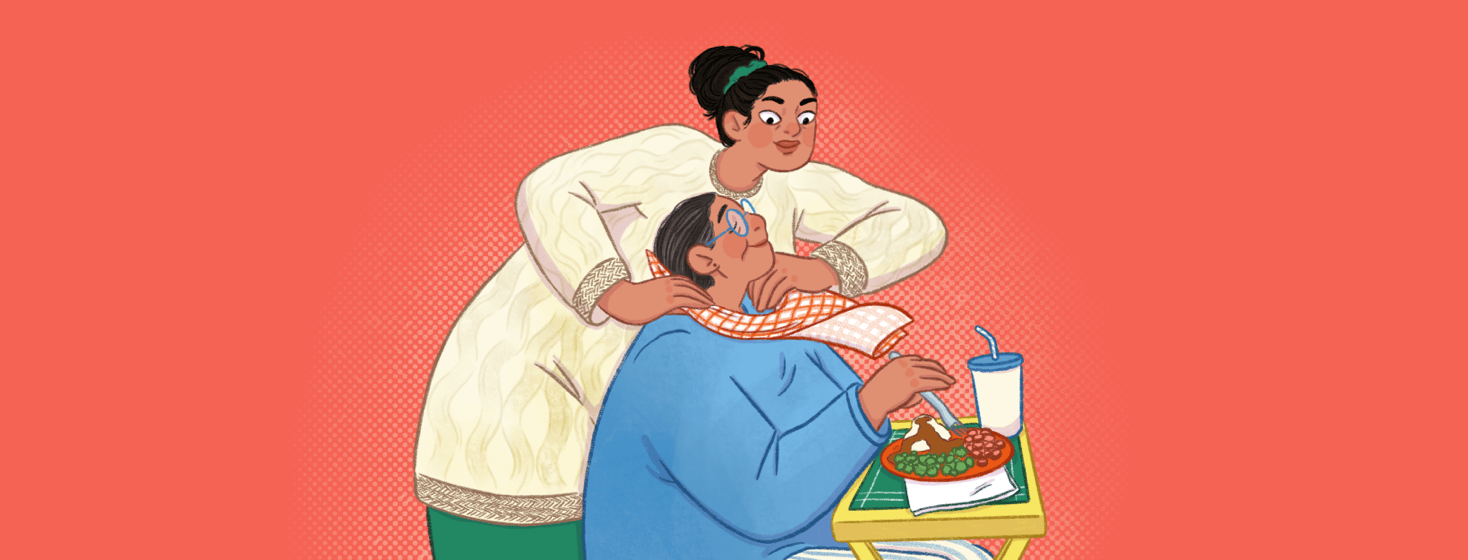How to Assist Your Loved One With Eating a Meal
A common issue many caregivers face is getting their loved ones to eat. There may come a time when your loved one cannot eat on their own anymore, and you will have to feed them yourself. But what if you are not quite there yet? What if your loved one can still feed themselves but just needs some assistance?
I often struggled with how I could help my mom feed herself. I wanted her to maintain as much of her independence as possible for as long as possible. However, if I simply left my mom alone with a plate of food, she would not eat it. I learned that with a bit of prompting and some assistance, my mom would finish her meal, and she could feed it to herself.
If you are dealing with similar issues with your loved one, I would like to share with you my step-by-step process for helping my mom eat a meal.
No more, no less
First, I would offer my mom 2 choices for what she would have to eat. Usually, when you ask someone with Alzheimer's a yes or no question, they will answer no because they don't understand what they are being asked.
Maybe they say no because they are afraid to commit to something they don't want. By offering 2 choices, they are more likely to pick one, and you are still giving them the freedom to make choices on their own. Any more than 2 is probably too confusing.
Setting up for success
Next, I would set my mom up at the table or attach the table tray to her wheelchair. I would get her situated wherever she was going to eat and have her wait there while I prepared her meal. I would talk to or sing with her to keep her engaged and prevent her from getting bored while she waited.
While preparing the meal, I would make sure to cut everything up into smaller pieces to make it more manageable. I would do this before presenting the meal to my mom, so she could start eating immediately.
Also, I would do my best to give her finger foods to avoid using any utensils, even if I want her to try using the utensils first.
Helpful mealtime tools
Using a colorful plate, bowl, or placemat may help your loved one be able to see their food better. Using a cup with a lid and a straw can help prevent your loved one from spilling their drink. And using an adult bib to cover your loved one's shirt can help if they are likely to drop food or spill on themselves.
Place it right in front
Once I had prepared the meal, I would set everything up in front of my mom. I would wait to see if she initiates feeding on her own; if not, I would take a piece of food and put it on the utensil or directly in her hand. Again, waiting to see if she initiates feeding herself and if not, I would gently guide her hand toward her mouth, lightly pressing the food up against her lips. Usually, she would open her mouth on her own, or I would say, "Open up," and she would.
Giving her ample time between bites to ensure she finished chewing before I offered her another bite prevented any choking or too much in the mouth at once.
I would also pick up the cup and press the straw to her lips to prompt her to drink every few bites. Remember, if you ask your loved one, "Do you want a drink?" or "Do you want another bite?" they are likely to say no. Instead, prompt them to do it or just gently do it for them.
Assistance with eating
I would repeat these steps until she finished eating or said she was full. Sometimes, it would take an hour for her to finish a meal. I'm sure it would have been faster and easier if I had fed her myself, but I wanted to help her maintain her independence for as long as possible. Knowing that my mom would not be able to provide for herself at all someday, I knew I would regret it if I didn't at least let her try.
I hope these tips are helpful for you to assist your loved one with eating. A little help, prompting, and patience can go a long way!

Join the conversation